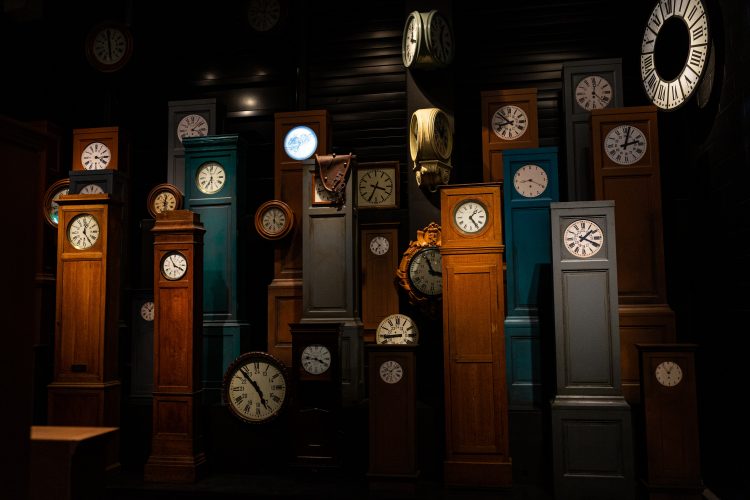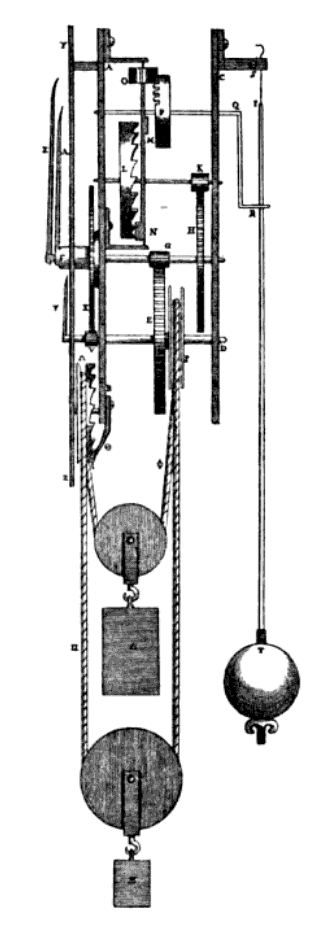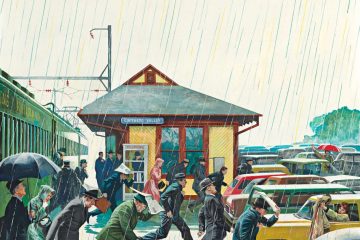Tick Tock Grandfather Clock
Q.
Why are they called grandfather clocks? And why do these stately time-keepers haunt so many mystery and horror stories?
.
A.
First: what makes it a ‘grandfather clock?’ Most definitions include four key features: 1) a pendulum, 2) a wooden case, 3) tallness – generally more than 6 feet, and 4) it stands on the floor.
The Grandfather Clock is distinguished from the Grandmother Clock (~less than 6 feet), and the Granddaughter Clock (~ between 3 and 5 feet)
Galileo famously explored the use of pendulums to mark time. It was Dutch physicist Christiaan Huygens, however, who created and patented the first pendulum clock.
.
.
British clockmaker William Clement extended the pendulum to approximately three feet creating the ‘longcase’ look of the grandfather clock.
How did this clock get its grandfatherly name? Wind the clock back to 1875 and a popular hit – My Grandfather’s Clock – by American songwriter Henry Clay Work. As it starts:
‘My grandfather’s clock was too large for the shelf,
So it stood ninety years on the floor.
It was taller by half than the old man himself,
Though it weighed not a pennyweight more.
It was bought on the morn of the day that he was born,
And was always his treasure and pride;
But it stopped short — never to go again —
When the old man died …’
.
Marc Chagall. Clock. 1914
.
Why do these grandfather clocks so often feature in mystery and horror plots?
i.
Perhaps the fear factor comes from the notion that these clocks could be alive. Is the tick, tick, tick, the heartbeat of a sentient house?
As Haruki Murakami writes so beautifully in ‘A Wild Sheep Case’:
‘The house kept its own time, like the old-fashioned grandfather clock in the living room. People who happened by raised the weights, and as long as the weights were wound, the clock continued ticking away. But with people gone and the weights unattended, whole chunks of time were left to collect in deposits of faded life on the floor.’
.
ii.
Or does that tick, tick, tick remind us of the horror movie countdown? 10, 9 – Get out of the House! – 8, 7.. Not to mention the For Whom The Bells Toll bong on every hour, half hour, fifteen minutes.
.
.
iii.
Are these clocks hiding horrible secrets or creatures behind their creaky case doors?
As we see in ‘Harry Potter and the Prisoner of Azkaban’:
‘Boggarts like dark, enclosed spaces,” said Professor Lupin. “Wardrobes, the gap beneath beds, the cupboards under sinks – I once met one that had lodged itself in a grandfather clock.”
iv.
And what of the Grandfather Clocks that seem to develop minds of their own? Our family longcase clock seemed perfectly genial, but it did refuse to conform to Earth time. One hour it was right on schedule: six bongs, six o’clock. 7 pm? Suddenly it’s bonging 11 times. Then by 8 pm, we’re down to 3. Is it sonic code? Are you telling us something?
We see a time-flouting longcase in Agatha Christie’s ‘The Clocks’, a 1963 mystery starring the high-handed Monsieur Hercule Poirot.
.
.
“And what about your other clocks?”
“I beg your pardon?”
“Your other clocks seem all to be just over an hour fast.”
“Fast? You mean the grandfather clock in the corner?”
“Not that only – all the other clocks in the sitting room are the same.”
“I don’t understand what you mean by the ‘other clocks’. There are no other clocks in the sitting room.’
.
www.justcurious.com
Header Image: Jan Sents











